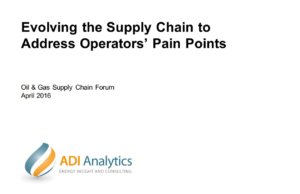Description
Report #1: Baseline Lifecycle Economics of Engineered Geothermal Systems
Published in December 2013. 76 pages. 40 exhibits.
The first report focuses on an independent assessment of the costs and economics of advanced geothermal energy technologies. Key findings covered in this report include the following:
- The levelized cost of electricity (LCOE) for EGS was estimated and analyzed using a spreadsheet model based on costs, economics, and performance of various geothermal technologies.
- Further, a number of EGS demonstration projects were profiled and analyzed to understand recent progress in EGS, and to provide input for the cost and economic modeling.
- One of the primary objectives of this project is to identify and rank, both qualitatively and quantitatively, cost components of EGS so that reductions can be made in those areas to improve the commercial feasibility of EGS. Expert elicitation has suggested that drilling and completions is the largest cost component followed by reservoir development and stimulation and power plant and surface equipment.
- Cost modeling using GETEM validated the qualitative results that were obtained through the expert elicitations and the literature review. The major cost components of both near-field and deep EGS include costs of drilling and completions, reservoir development, power plant, risk management, and transmission.
- Operating EGS plants requires expenses for labor at the plant and on the field, maintenance, field equipment, royalties, and water.
- After considering the distribution of the capital and operating costs of EGS, GETEM was used to estimate LCOE and its breakdown by cost category for both near-field and deep EGS cases. Estimates and ranges for key metrics gathered from literature review and expert elicitations were used for LCOE modeling and uncertainty analysis. The focus was placed on gathering estimates for drilling, power plant, and reservoir stimulation, which are the three leading cost drivers.
- As discussed earlier, based on inputs that were received during the literature review and exert elicitation, a database was generated, which includes cost and cost uncertainty estimates of most components that contribute to LCOE. The database was used to generate inputs for the uncertainty analysis and distributions of LCOE outcomes.
- The LCOEs of EGS estimated in this study were compared with other estimates in literature. In general, there is a wide level of variation across all LCOE estimates because of differences in assumptions and methodology. Variations due to estimation in different periods of time have been accounted for by adjusting the LCOE estimates using a cost inflation index developed for the power generation industry.
- In addition to comparing the different EGS LCOE estimates, we also compared our EGS LCOE estimates with those of other power generation technologies.
- Also, we assessed EGS economics using three scenarios that could reasonably increase and decrease costs. These three cases are based on configurations various project developers are pursuing to reduce costs or problems they have had to address. The first is the “no-drilling” case, which assumes that initial EGS projects will leverage wells that have already been drilled and are either in use or have been abandoned. The second case is based on situations that may require re-drilling. Finally, the third case assesses the impact of unexpectedly higher water losses during reservoir development and stimulation.
- In addition to estimating baseline economics, the expert elicitations, literature review, cost modeling, and uncertainty analyses conducted in this task also improved our understanding of various EGS demonstration projects worldwide. A number of EGS demonstration projects globally were profiled, including projects that are currently under development.
























